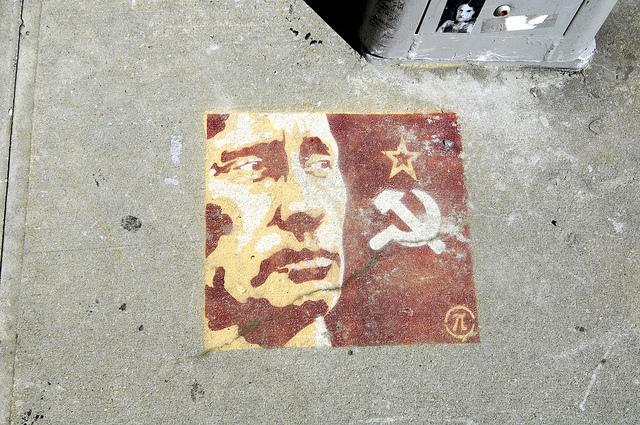
First, the good news. The American and Russian-brokered ceasefire in Syria, the ‘cessation of hostilities’, which became effective on 27 February, has been holding. Sort of. The guns have certainly not fallen silent—far from it—but there’s been a significant decrease in bombing, shelling and other kinetic activity. The last attempt at a ceasefire nearly four years ago, then brokered by the UN, collapsed within hours. So on the face of it things appear promising.
Although, there are inherent flaws and weaknesses in this ceasefire, the peace talks did resume as scheduled on Monday 14 March in Geneva.
As a starter, this ceasefire only applies to the Western and Arab-backed armed anti-government opposition groups, the Syrian government forces and their Iranian-backed Lebanese Hezbollah fighters, and the Russian military. It excludes two important parties: the Islamic State and the al-Qaeda-affiliated Nusrat Front.
On the one hand, the exclusion of ISIS is sensible—it’s executing a battle whose main focus isn’t the downfall of the Syrian government of President al-Assad but the establishment of a greater Islamic Caliphate. On the other hand, the Nusrat Front is an armed group whose main target is the government in Damascus. More troublesome still is the proximity of Nusrat’s fighters with some of the Western-backed groups, especially around Aleppo, Syria’s largest city. And Aleppo has been getting special attention from Russian fighters. Despite the ceasefire, Russian aerial bombings have continued, albeit at a reduced pace, ostensibly targeting the Nusrat Front but degrading the Western-backed armed groups. That’s no accident on the part of the Russians.
Apart from the inherent difficulty in monitoring the ceasefire violations, and the lack of enforceable mechanism, there’s no will from any side to denounce the truce violations because these would jeopardise the more important phase of the ceasefire, the peace talks about the future of Syria.
Nevertheless, the ceasefire has allowed some delivery of much needed humanitarian aid to thousands of desperate civilians who have been unable to access food and medicine because of the ongoing fighting. That alone is a success given that neither the US nor Russia had high expectations that the ceasefire would hold.
Now for the bad news. The ceasefire has benefited the Syrian president the most in that it has frozen the battle lines following the Syrian government’s successive wins against the armed opposition. This was only possible after President Putin decided to intervene militarily in the civil war in September 2015. And in doing so, Putin achieved his first goal: to save the political life of his only Arab ally, President al-Assad.
The second bit of bad news is that by giving al-Assad a new lease of political life, Putin has managed to protect Russia’s vital interest in Syria: its naval base in Tartus, Russia’s only toehold in the Mediterranean. The base is of huge strategic importance to the Russians who otherwise would’ve been cut out of the Middle East. By having access to that vital strategic asset, Putin is able to harden Russia’s soft underbelly and reduce the threat from jihadist extremists coming through the Caucuses.
Putin’s success in Syria occurred in spite of Washington confidently and smugly asserting that Russia would get bogged down in Syria following its military intervention in that country. On the contrary, Russia has consolidated its position in Syria and the region. And at the cost of about US$3 million a day and few battle casualties, this is a war which Putin can afford to conduct relatively cheaply and with little fear of a backlash back home.
Putin has also shown a greater willingness to protect his ally al-Assad than Obama has been willing to support the anti-al-Assad forces, focussing instead on fighting ISIS. The now infamous chemical weapons ‘red line’ threat and Obama’s failure to follow through when this was crossed further weakened his credibility in Syria and the Middle East. It confirmed yet again that the US president has no appetite to get involved in Syria’s civil war.
What does Syria’s future look like? We may well be looking at a de facto partition of the country along the frozen battle lines, and a permanent separation down the road. In the meantime, while al-Assad’s area of influence is diminished, he still controls a whole swath of contiguous land from Damascus in the south to Aleppo in the north, including access to the strategically important coastal area. More importantly, and thanks to Russian and Iranian military backing, al-Assad will be in a much better position to reject future US demands for his departure from the political scene.
If the ceasefire—if one can call it that—doesn’t hold, the Americans are looking at a Plan B which would include increasing military support to anti-al-Assad groups. Reportedly, this military aid wouldn’t include surface-to-air missiles for fear that such weapons could fall in the hands of terrorist groups. To not provide those missiles to the opposition would be a big mistake, militarily and diplomatically. The message it would send the Russians (and the Syrian government) is that they would not need to fear any retribution for their relentless bombing—deliberate or not—of Western-backed opposition groups. This would simply embolden Putin further.
So regardless whether the ceasefire holds and how the peace talks go, one thing is certain: Russia isn’t leaving Syria soon (notwithstanding an unexpected announcement by Putin on Monday that he had ordered a partial withdrawal of the Russian military). Like a fox, Putin’s announcement may well simply be a cunning negotiating ploy.